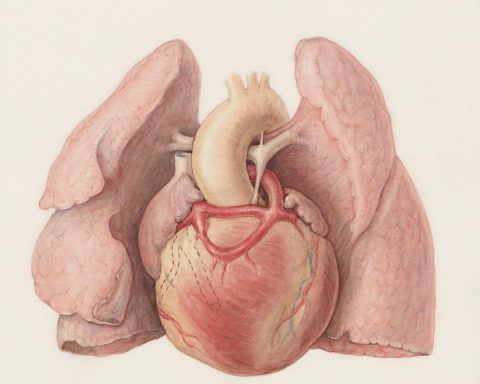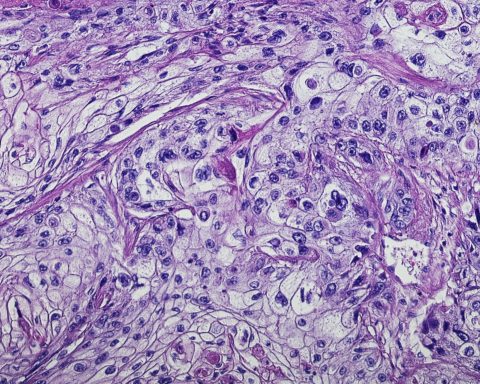 These are the top 10 most read research articles based on full text downloads from bjgp.org in 2017.
These are the top 10 most read research articles based on full text downloads from bjgp.org in 2017.
1. Clinical relevance of thrombocytosis in primary care: a prospective cohort study of cancer incidence using English electronic medical records and cancer registry data
http://bjgp.org/content/67/659/e405
This is the first study to estimate the overall risk of cancer in patients with thrombocytosis. The positive predictive value of thrombocytosis is 11.6% for males and 6.2% for females. This rises to 18.1% for males and 10.1% for females if the patient has a second raised platelet count within six months. These figures are well above the 3% threshold used by the National Institute for Health and Care Excellence for suspected cancer investigation, and strongly suggest that cancer should be considered in patients showing thrombocytosis.
2. Influences on GP coping and resilience: a qualitative study in primary care
http://bjgp.org/content/67/659/e428
At the individual level, resilience training may be of benefit to GPs, yet an exclusive focus on improving individual coping risks sidesteps the systemic challenges shaping primary care. In the context of complex changes in the GP workplace, and their links to wider political changes, this study used a qualitative interpretative approach in order to address the question: what are GPs’ experiences of contemporary workplace challenges and stresses, and their preferred coping strategies?
3. GPs’ knowledge, use, and confidence in national physical activity and health guidelines and tools: a questionnaire-based survey of general practice in England
http://bjgp.org/content/67/663/e668
This study found the majority of GPs (80%) are unfamiliar with the national physical activity (PA) guidelines. Use of tools to assess patient PA, such as the General Practice Physical Activity Questionnaire (GPPAQ), are within clinical guidelines and, though the majority of GPs are aware of them (70%), most do not understand or use them in practice, and are unconfident in raising the subject with patients. Knowledge of the guidelines increased the likelihood that a GP would know about the tools, use them, and raise the issue of PA with patients whose conditions could benefit.
4. Emergency diagnosis of cancer and previous general practice consultations: insights from linked patient survey data
http://bjgp.org/content/67/659/e377
Diagnosis of cancer as an emergency has been considered to represent ‘a failure of primary care’. Evidence to support such assertions is, however, limited. A notable minority of all emergency presenters have no prior contact with primary care, particularly males, older, and more deprived patients, and those with brain cancer. Among emergency presenters who have seen a GP, multiple consultations occur in a minority and are driven by diagnostic difficulty.
5. Diagnostic accuracy of GPs when using an early-intervention decision support system: a high-fidelity simulation
http://bjgp.org/content/67/656/e201
This study demonstrated that a decision support system designed around the principle of early support, and integrated with the electronic health record, can be used by GPs in realistic consultations and can improve diagnostic accuracy without measurable influences on tests ordered, consultation length, or patient satisfaction.
6. Application of the 2014 NICE cholesterol guidelines in the English population: a cross-sectional analysis
http://bjgp.org/content/67/662/e598
The 2014 guidelines on cardiovascular risk assessment and lipid modification from the National Institute for Health and Care Excellence (NICE) recommend statin therapy to patients with existing cardiovascular disease, and to patients without cardiovascular disease who have a 10-year risk of disease at ≥10%, as predicted by the QRISK2 algorithm. This study confirmed that age was an important driver of risk in the QRISK2 algorithm, and that from the age of 60–75 years, depending on sex and ethnicity, the risk threshold for primary prevention was exceeded in all adults, including those with no increased risk factors. Under the guidelines, 11.8 million (37%) adults in England aged 30–84 years, including almost all males >60 years and all females >75 years, would be eligible for statin therapy.
7. Clinical features of bowel disease in patients aged <50 years in primary care: a large case-control study
http://bjgp.org/content/67/658/e336
It is difficult for GPs to determine whether bowel symptoms in patients aged <50 years require further investigation. Delay in diagnosis of colorectal cancer (CRC) and inflammatory bowel disease (IBD) in patients aged <50 years is common and causes harm. Rectal bleeding and a change in bowel habit are both strongly predictive of CRC or IBD when combined with abnormal haematology. The CRC/IBD risk assessment tool may help to reduce diagnostic delay.
One solution to improving the diagnosis of serious organic bowel disease in younger patients is to consider the possibility of CRC and IBD together, and to ask the clinical question, ‘Which younger patients with symptoms would benefit from investigation for potentially serious colorectal disease?’
8. Pharmacists’ perceptions of their emerging general practice roles in UK primary care: a qualitative interview study
http://bjgp.org/content/67/662/e650
This study used qualitative methods to contribute to the currently sparse literature on pharmacists’ perceptions regarding the integration of their profession into UK general practice. The study shows that there is enthusiasm and willingness, especially among junior pharmacists, for new, extended roles based in primary care, which should be harnessed in order to relieve current GP workforce pressures. A definition of the role, with examples of the knowledge, skills, and attributes required, should be made available to pharmacists, primary care teams, and the public. Primary care training for pharmacists should include clinical skills teaching, set in context through exposure to general practice, and delivered by primary care practitioners.
9. Prescribing tamoxifen in primary care for the prevention of breast cancer: a national online survey of GPs attitudes
http://bjgp.org/content/67/659/e414
The cancer strategy for England recommends that GPs prescribe tamoxifen for breast cancer primary prevention among women at increased risk. The authors demonstrated that GPs are largely unaware of using tamoxifen for primary prevention, and a significant minority may be unwilling to prescribe the drug for eligible patients. These data show that a shared care agreement between primary and secondary care could alleviate a number of concerns, and facilitate appropriate prescribing.
10. Identifying primary care quality indicators for people with serious mental illness: a systematic review
http://bjgp.org/content/67/661/e519
This is the first systematic review of indicators of primary care quality for patients with serious mental illness. The study identifies 59 quality indicators in six domains, the majority of which could be monitored using routine primary care data. A key domain is the focus on physical health care. Consideration of the use of a broad set of quality of care indicators may support the improvement of the mental and physical health of this patient group.







5